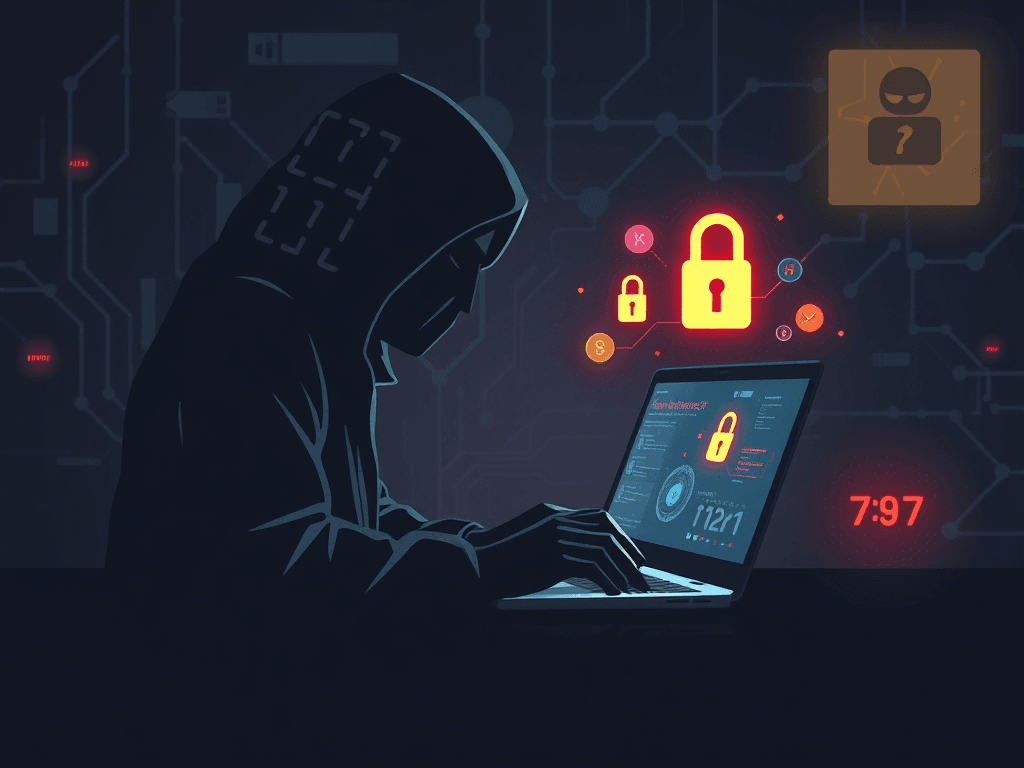In an increasingly interconnected world, cybercrime has become a pervasive and evolving threat. Defined as criminal activities carried out using computers, networks, or the internet, cybercrime encompasses a wide range of malicious acts that target individuals, businesses, governments, and even entire nations. From financial fraud to data theft, understanding cybercrime is essential for safeguarding personal information, protecting critical infrastructure, and maintaining trust in digital systems. Let’s delve into what cybercrime entails, how it operates, and what steps can be taken to combat it.
What Is Cybercrime?
Cybercrime refers to any illegal activity that involves a computer, networked device, or the internet. Unlike traditional crimes, cybercriminals often operate remotely, leveraging technology to exploit vulnerabilities in systems or manipulate human behavior. These crimes can have devastating consequences, including financial losses, reputational damage, and breaches of sensitive data.
Common types of cybercrime include:
- Hacking: Unauthorized access to computer systems or networks.
- Phishing: Fraudulent attempts to obtain sensitive information by disguising as a trustworthy entity.
- Identity Theft: Stealing personal information to commit fraud or other crimes.
- Ransomware Attacks: Encrypting data and demanding payment for its release.
- Distributed Denial-of-Service (DDoS) Attacks: Overloading a system with traffic to disrupt services.
- Online Scams and Fraud: Deceptive schemes to trick victims into sending money or revealing private details.
For a deeper dive into the definition and scope of cybercrime, visit Interpol’s Cybercrime Resources.
How Does Cybercrime Work?
Cybercriminals employ sophisticated techniques to infiltrate systems, steal data, or extort money. Here’s a breakdown of how these attacks typically unfold:
1. Reconnaissance
Attackers gather information about their targets, identifying weaknesses in systems, software, or human behavior. This phase may involve scanning networks, researching employees on social media, or testing defenses with probing attacks.
2. Exploitation
Once vulnerabilities are identified, attackers exploit them to gain unauthorized access. Common methods include:
- Exploiting unpatched software vulnerabilities.
- Using stolen credentials obtained through phishing or brute-force attacks.
- Deploying malware via malicious links, attachments, or compromised websites.
3. Execution
After gaining access, cybercriminals execute their objectives, which may include:
- Stealing sensitive data, such as credit card numbers or intellectual property.
- Installing ransomware to encrypt files and demand payment.
- Launching DDoS attacks to cripple online services.
4. Monetization
The final step involves profiting from the attack. This could mean selling stolen data on the dark web, demanding ransoms, or directly siphoning funds from bank accounts.
To understand the lifecycle of a cyberattack, refer to FireEye’s Threat Intelligence Reports.
Who Are the Perpetrators of Cybercrime?
Cybercriminals come from diverse backgrounds and motivations. They include:
1. Individual Hackers
Lone actors who may hack for personal gain, ideological reasons, or simply to prove their technical prowess.
2. Organized Crime Groups
Highly structured organizations that operate like businesses, specializing in large-scale cybercrimes such as ransomware campaigns and identity theft rings.
3. State-Sponsored Actors
Nation-states engage in cyber espionage or sabotage to achieve political, economic, or military objectives. Examples include stealing classified information or disrupting critical infrastructure.
4. Insiders
Employees or contractors with legitimate access to systems who misuse their privileges, either intentionally or unintentionally.
5. Hacktivists
Groups or individuals who use hacking to promote social or political agendas, often targeting corporations or governments they perceive as unethical.
For case studies of notorious cybercriminal groups, explore CrowdStrike’s Cyber Threat Reports.
The Impact of Cybercrime
The consequences of cybercrime extend far beyond immediate financial losses. Some key impacts include:
1. Financial Damage
Businesses lose billions annually due to cyberattacks. Costs arise from stolen funds, regulatory fines, legal fees, and remediation efforts.
2. Data Breaches
Sensitive information, such as customer records or trade secrets, can be exposed, leading to reputational harm and loss of consumer trust.
3. Disruption of Services
Critical infrastructure, healthcare systems, and online platforms can be crippled by cyberattacks, affecting millions of people.
4. Psychological Toll
Victims of cybercrime, especially those affected by identity theft or online harassment, often experience stress, anxiety, and a sense of violation.
According to research, global cybercrime costs are projected to reach $10.5 trillion annually by 2025. For more statistics, visit Cybersecurity Ventures.
Common Types of Cybercrime Explained
1. Phishing and Social Engineering
These tactics trick users into divulging confidential information, such as passwords or credit card details. Phishing emails often mimic legitimate messages from banks, retailers, or employers.
2. Malware Attacks
Malicious software, including viruses, worms, Trojans, and spyware, infiltrates systems to steal data, damage files, or create backdoors for future attacks.
3. Ransomware
As discussed earlier, ransomware encrypts files and demands payment for decryption keys. It has become one of the most lucrative forms of cybercrime.
4. Man-in-the-Middle (MitM) Attacks
Attackers intercept communications between two parties, eavesdropping or altering messages without detection. Public Wi-Fi networks are common targets.
5. Cryptojacking
This involves hijacking computing resources to mine cryptocurrency without the owner’s consent, slowing down devices and increasing electricity bills.
For examples of real-world cybercrime incidents, check out BBC News’ Cybersecurity Coverage.
How to Protect Against Cybercrime
Prevention is crucial to mitigating the risks posed by cybercrime. Here are some effective strategies:
1. Use Strong Passwords and Multi-Factor Authentication (MFA)
Protect accounts with complex passwords and enable MFA to add an extra layer of security.
2. Keep Software Updated
Regularly update operating systems, applications, and antivirus programs to patch known vulnerabilities.
3. Educate Yourself and Others
Stay informed about the latest threats and educate family members, friends, or colleagues about safe online practices.
4. Secure Your Network
Use firewalls, encryption, and secure Wi-Fi protocols to protect your home or office network from unauthorized access.
5. Backup Data Regularly
Maintain offline backups of important files to recover quickly in case of an attack.
6. Monitor Financial Accounts
Keep an eye on bank statements and credit reports for signs of fraudulent activity.
For practical tips on staying safe online, refer to StaySafeOnline.org.
Conclusion: Combating Cybercrime Together
Cybercrime is a dynamic and ever-evolving challenge that requires vigilance, collaboration, and innovation to address effectively. By understanding its mechanisms, recognizing its dangers, and adopting proactive measures, individuals and organizations can minimize their exposure to risk. Governments, law enforcement agencies, and cybersecurity professionals also play vital roles in combating this global menace.
As technology continues to advance, so too will the sophistication of cybercriminals. Staying informed and prepared is our best defense against the growing tide of cybercrime. For ongoing updates and resources, follow trusted authorities like CISA, Europol’s Cybercrime Center, and Kaspersky’s Threat Intelligence Blog.
Remember, in the fight against cybercrime, knowledge truly is power.

















Leave a comment